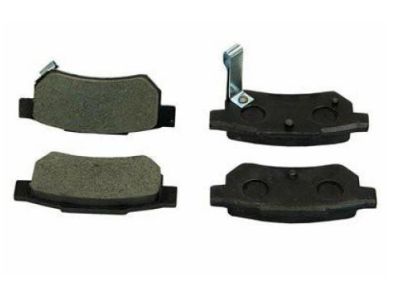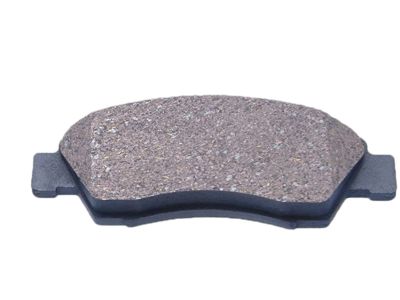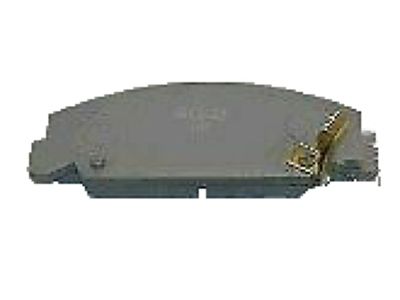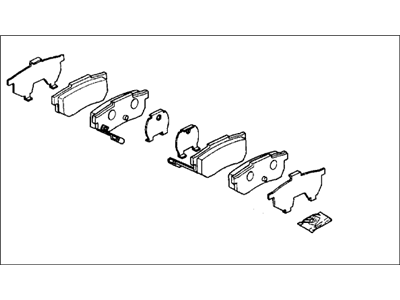×
- Hello
- Login or Register
- Quick Links
- Live Chat
- Track Order
- Parts Availability
- RMA
- Help Center
- Contact Us
- Shop for
- Honda Parts
- Honda Accessories

My Garage
My Account
Cart
Genuine Honda Del Sol Brake Pad Set
Disc Brake Pad Set- Select Vehicle by Model
- Select Vehicle by VIN
Select Vehicle by Model
orMake
Model
Year
Select Vehicle by VIN
For the most accurate results, select vehicle by your VIN (Vehicle Identification Number).
4 Brake Pad Sets found

Honda Del Sol Pad Set, Rear (7Clp-13S)
Part Number: 43022-SR2-030$65.84 MSRP: $93.00You Save: $27.16 (30%)

Honda Del Sol Set, Pad Front (Ad51M)
Part Number: 45022-SH1-515$54.98 MSRP: $77.65You Save: $22.67 (30%)
Honda Del Sol Brake Pad Set
In search of affordable OEM Honda Del Sol Brake Pad Set? Consider browsing through our extensive inventory of genuine Honda Del Sol Brake Pad Set. Not only do we provide market-leading prices and a manufacturer's warranty, but we also pride ourselves on exceptional customer service and swift delivery.
Honda Del Sol Brake Pad Set Parts Questions & Experts Answers
- Q: How to replace Brake Pad on Honda Del Sol?A:It applies to both front and rear disc brakes. First, open the cap of the brake fluid container, and then, using the required equipment, unscrew the lug nuts of the car wheel, lift the car with the help of a jack and fixed it on special stands. Lift off the wheels at the same time and when doing this, you should work on one brake assembly at a time and if you require the assembled brake, this should be availed in this time. Check the Brake Disc closely; if machining is required, pull off the disc so as to reveal the calipers as well as the pads. For front pads, pushing the piston back into the bore you can use a C-clamp and at the same time you should make sure that master cylinder fluid does not overflow. Watch the illustrations for pad replacement steps; the sequence is for front calipers only. Clean the assembly with brake system cleaner, then unbolt the caliper and swing it well out of the assembly way. Discard and analyze the brake pad retainer clips, then put anti- squeal compound on the back of the inner pads, and then put in new inner and outer pads. Check and replace the dust boot of caliper pin and slide the caliper over the upper locating pin and put it down on the disc and new pads and finally tighten up the lower bolt up to the torque setting. For rear pads, smooth a layer of disc brake anti-squeal compound on the backing plates of the new pads, position the shims and pad retainers suitably and lubricate the retainers: finally, place the new pads and shims into the rear pads. To retract the piston turn it clockwise with the help of needle-nose pliers till it stops and then bring it in contact with the tab present on the inner side of the brake pad. Last but not the least, we have the caliper protector, the wheel, and the lug nuts, lower the vehicle, and finally the lug nuts to the recommend torque. Examine the brake fluid reservoir and replenish it in case the level is low and press gently the brake pedal and hand brake lever several times to make the pads foul on the brake discs, test brake efficiency in a safe part before driving.




















